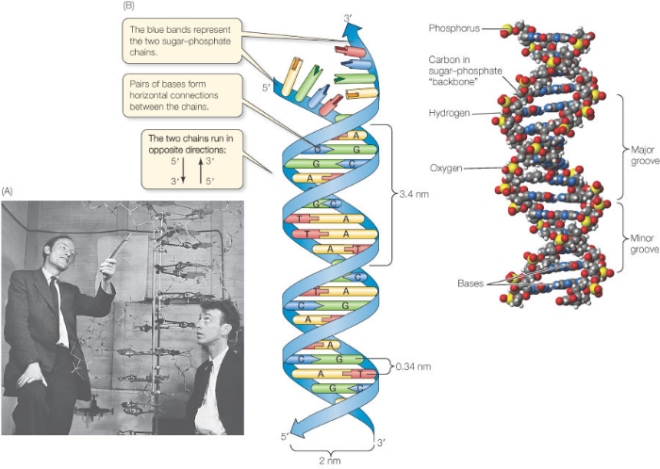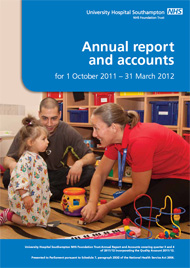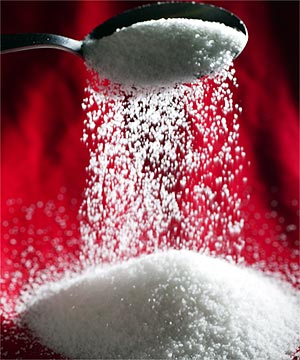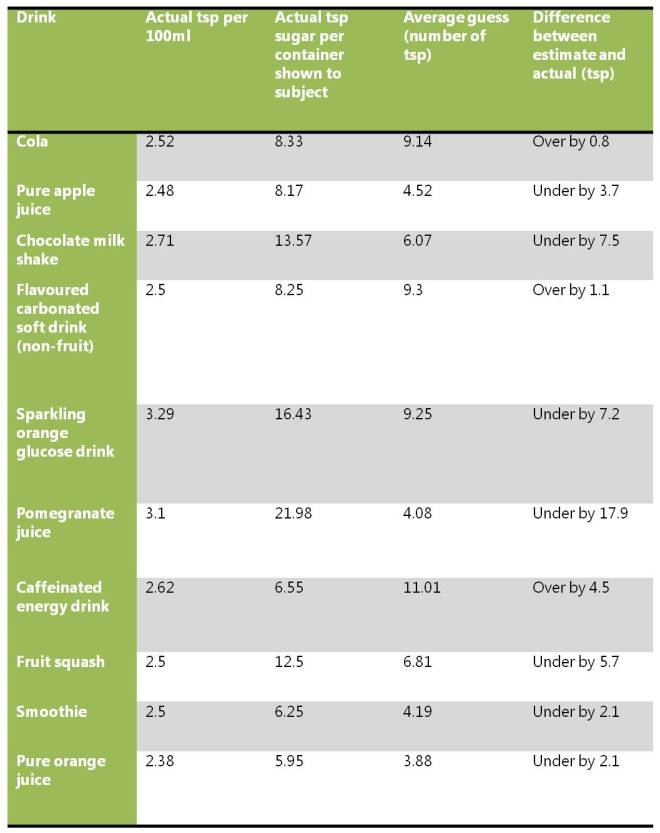It must have taken courage for Angelina Jolie to tell the world, via an article in the New York Times, that she had undergone a preventive double mastectomy. A-list actresses are usually judged on their body image as much as on their acting ability.
Angelina made this choice because her doctors had warned her that she has an 87% risk of developing breast cancer and a 50% risk of getting ovarian cancer because her mother died of breast cancer and she carries the BRCA1 gene.
I respect Angelina for making a choice which felt right for her and her family.
That is all any of us can do when faced with difficult decisions and the tsunami of judgement that has greeted her article is regrettable.
The story does, however, raise fascinating questions about whether we are really at the mercy of our genes.
Do our genes dictate our fate or do we have any power over them?
I want to tell you what I think and why.
In 1868, Friedrich Miescher discovered the presence of DNA, and in 1953, James Watson and Francis Crick discovered its molecular structure, with the help of Maurice Wilkins, Rosalind Franklin, Erwin Chargaff and Linus Pauling.
In the years that followed, scientists have learned a great deal about how this genetic code dictates who we are.
Our DNA – specifically the 25,000 genes identified by the Human Genome Project – is now widely regarded as the instruction book for the human body.
Genetic science has attracted billions of dollars of research funding and was heralded as the key to understanding and curing diseases like cancer.
The trouble is that despite all the money that has been poured into it, our knowledge of genetics has not yielded the promised revolutionary cures for cancer on a widespread scale.
Whilst the latest official report on the “War on Cancer” from America indicates that death rates for all cancers combined decreased by 1.5 percent per year from 2000 to 2009 [1], this is no greater than the previous five year period.
Deaths are still rising for certain cancer types including liver, pancreatic, uterus and, among men, melanoma. Rates of human papillomavirus (HPV)–related cancers, such as oral, anal, vaginal, vulval, penis and cervical, also remain stubbornly high despite the availability of a vaccine. And many epithelial cancers (carcinomas) and effectively all mesenchymal cancers (sarcomas) remain incurable.
There were decreases in new breast cancer cases about a decade ago, as many women stopped using hormone therapy after menopause. Since then, overall breast cancer incidence has reached a plateau, and rates have increased among black women.
The decrease in cancer mortality is driven largely by the decrease in cancer incidence, which is mostly because of the decrease in smoking [1]. Smoking can cause more than a dozen cancers, including lung, head, neck, bladder and mouth.
Although improvements in screening and treatment for breast and some other cancers have cut death rates, most of the expensive new drugs prolong survival for no more than three or four months on average.
James Watson, famous for his part in the discovery of the structure of DNA, wrote in a recent edition of the Royal Society Journal “Open Biology”[2]:
Even though an increasing variety of intelligently designed, gene-targeted drugs now are in clinical use, they generally only temporarily hold back the fatal ravages of major cancers such as those of the lung, colon and breast that have become metastatic and gone beyond the reach of the skilled surgeon or radiotherapist. Even though we will soon have comprehensive views of how most cancers arise and function at the genetic and biochemical level, their ‘curing’ seems now to many seasoned scientists an even more daunting objective than when the ‘War on Cancer’ was started by President Nixon in December 1971.
When we look at the decades of investments, the cost of treatments, the number of researchers and journals, and at the number of people who continue to die, we have to ask if we are barking up the wrong tree.
I believe we are.
The reality is that as fast as scientists find a ‘magic bullet’ to block a particular protein or cellular pathway to decimate cancer cells, the cancer cells find a way to circumvent the therapy, thrive and proliferate.
How do they do this?
Well it turns out that DNA, the genome, is only half the story.
This should not be a surprise given that chromosomes contain only 50 per cent DNA; the other 50 per cent is protein.
Within each chromosome, DNA is wrapped around proteins called histones. Both DNA and histones are covered in millions of tiny chemical tags.
This second layer of structure comprising histones and chemical tags is called the epigenome – meaning literally “above the genome”.
The epigenome shapes the physical structure of the genome, the DNA. It tightly wraps inactive genes making them unreadable. It relaxes around active genes making them easily accessible.
Different sets of genes are active in different cell types.
A human liver cell, for example, contains the same DNA as a brain cell, yet somehow it knows to code only those proteins needed for the functioning of the liver. Those instructions are found not in the letters of the DNA itself but on the array of chemical tags which are part of the epigenome.
The DNA code remains fixed for life but the epigenome is flexible.
Epigenetic tags react to signals within the cell environment and to signals from the outside environment, such as diet, stress and our thoughts.
The epigenome adjusts the expression of specific genes in response to our rapidly changing environment.
How does this work?
In the 1980s, researchers discovered that the answer to this question lay in specific chemical modifications to genomic DNA and its associated histone proteins, without changing the DNA itself at all.
What are these modifications?
In school biology lessons we learn that DNA is built from four different units called nucleotides: adenine, cytosine, guanine, and thymine.
In one type of epigenetic modification, a methyl group (one carbon atom linked to three hydrogen atoms -CH3) is added to specific cytosine bases of the DNA with help from enzymes.
This process, called DNA methylation, is known to play a key role in both development and disease.Methylation of DNA affects the way the molecule is shaped and, consequently, regulates which genes are available to be ‘read’ or transcribed.
Recently, another type of epigenetic modification of DNA was discovered: the addition of a hydroxymethyl group (–CH2–OH) to specific cytosine bases of DNA.
Histone proteins can also be modified in a number of ways; in addition to methylation, they can be modified with acetyl groups (acetylation), phosphate groups (phosphorylation), ubiquitin proteins (ubiquitylation), and SUMO proteins (sumoylation).
But epigenetic phenomena are not restricted to DNA methylation and various types of histone modifications.
Scientists have found that RNA molecules themselves can also regulate DNA directly by physically blocking or influencing the reading of DNA sequences.
These RNA molecules aren’t the classic messenger RNA (mRNA) molecules we learn about in school biology that carry the information from DNA in the nucleus to the cytoplasm of a cell. Rather, these RNA molecules – called antisense RNAs, microRNAs, and noncoding RNAs – stay primarily within the nucleus, where they induce changes in DNA function.
It is not yet fully understood how these RNA molecules work but it appears they may bind to histone proteins and/or help to turn off gene promoters.
So how does the environment interact with the epigenome and influence our genes?
One of the most exciting discoveries of modern science is that our DNA, the genome, responds dynamically to the environment.
Stress, diet, behaviour, toxins and other factors activate the chemical tags or switches that turn our genes on and off.
Nutrition is one of the easier environmental factors to study with respect to epigenetic changes and is receiving considerable research effort.
One of the most stunning examples of the effect of nutrition on gene expression was an experiment conducted at Duke University in 2000 [3].
Randy Jirtle and his postdoctoral student Robert Waterland took pairs of fat, yellow mice which carry the agouti gene, which is also found in humans. This gene makes the rats extremely hungry and renders them prone to obesity, diabetes and cancer.
Typically, when agouti mice breed, most of the offspring are identical to the parents: yellow, fat and susceptible to disease.
In this experiment, the researchers simply changed the diet of the mothers.
Before conception and during pregnancy, one set of mice were fed a diet containing nutrients rich in methyl groups, for example, folate and the B vitamins. These molecules are found in many plant foods and in supplements given to pregnant women. The other set of genetically identical mice were fed a regular diet low in these nutrients over the same time period.
To the researchers’ amazement, the mothers fed the methyl rich diet produced brown, slim, healthy offspring, whereas the mothers on the normal diet produced the typical yellow, fat and sickly offspring. The only difference between the two was the diet the mothers were given.
Methyl groups from the dietary supplements (folic acid, vitamin B12, choline, and betaine) bound to the DNA of the mice, increasing DNA methylation and preventing the agouti gene from being expressed.
Chemicals and additives that enter our bodies can also affect the epigenome.
Bisphenol A (BPA) is a compound used to make polycarbonate plastic. It is in many consumer products including water bottles and the lining of tin cans.
When pregnant yellow agouti mothers were fed BPA, more yellow, unhealthy babies were born than normal. Exposure to BPA during early development had caused decreased methylation of the agouti gene.
However, when BPA-exposed, pregnant yellow mice were fed a diet containing B vitamins, folate, choline and betaine, which are rich in methyl groups, the offspring were predominantly brown. The maternal nutrient supplementation had counteracted the negative effects of exposure to a genotoxic chemical [4].
The father’s diet may be important too.
A Swedish paper published in 2007 [5] provided evidence from historical records that a shortage of food for grandfathers was associated with extended lifespan of their grandchildren. Food abundance, on the other hand, was associated with a greatly shortened lifespan of the grandchildren due to diabetes and heart disease.
This suggests the possibility that during this critical period of development for the grandfather, epigenetic mechanisms are “capturing” nutritional information about the environment to pass on to the next generation.
Honey bees, too, provide a beautiful example of the power of nutrition over gene expression.
The larvae that develop into workers and queens are genetically identical. Larvae destined to become queens, however, are fed a diet of royal jelly in a special compartment in the hive called a queen cup.
Royal jelly is a complex, protein-rich substance secreted from glands on the heads of worker bees. Consumption of royal jelly enables the queen to develop functional ovaries and a larger abdomen for egg laying, while worker bees remain sterile.
The queen also develops different behaviours from those of the workers, becoming more aggressive, looking for mates and communicating using sounds. The queen is fed royal jelly exclusively for the rest of her life.
In a recent series of experiments, scientists determined that royal jelly silences a key gene (Dnmt3), which codes for an enzyme involved in genome-wide gene silencing [6]. When Dnmt3 is active in bee larvae, the queen genes are epigenetically silenced and the larvae develop into the default “worker” variety. But when royal jelly turns Dnmt3 off, certain genes jump into action that turn the larvae into queens.
This is all very interesting but how is it relevant to cancer?
Cancer develops when a cell becomes abnormal and begins to grow out of control.
Cancer can begin when a mutation changes a cell’s DNA sequence. We know that mutations in at least several hundred human genes (out of a total of 25 000 genes) can lead to the abnormal cell growth and division process that generates human cancer [7].
But cancer cells also have abnormal epigenomes.
In many cancers, some genes are turned up and some are turned down – often in the same cells. Cancer is just one in a growing number of diseases that are being linked to changes in the epigenome.
Some cancer cells have a lower level of methylation (more active DNA) than healthy cells.
Too little methylation causes:
- activation of genes that promote cell growth
- chromosome instability – highly active DNA is more likely to be duplicated, deleted and moved to other locations
- loss of imprinting. For most genes, we inherit two working copies – one from each parent. But with imprinted genes, we inherit only one working copy. Depending on the gene, either the copy from your mother or your father is epigenetically silenced. Silencing usually happens through the addition of methyl groups during egg or sperm formation.
Cancer cells can also have genes that have more methyl (are less active) than normal.
The types of genes that are turned down in cancer cells:
- keep cell growth in check
- repair damaged DNA
- initiate programmed cell death
But here is the real magic.
Unlike mutations, DNA methylation and histone modifications are reversible.
Researchers are thus exploring drug therapies that can change the epigenetic profiles of cancer cells. One challenge with epigenetic therapies is figuring out how to target drugs to the right genes in the right tissues.
It is for example possible to reactivate dormant tumour-suppressor genes with drugs which remove methyl groups from histone proteins [8].
DNA demethylating drugs in low doses have clinical activity against some tumours, for example, leukaemia, but have not yet been shown to have activity against solid tumours [9].
A key problem is that these demethylating agents are non-specific, often toxic and can potentially exert their effects in healthy tissues paradoxically causing new tumours to develop.
Other drugs targeted at the epigenome are the histone deacetylase (HDAC) inhibitors.
These can induce differentiation, cell-cycle arrest, and programmed cell death (apoptosis) in vitro, although it has not been possible to pinpoint a specific mechanism that explains these effects [10].
In clinical trials, HDAC inhibitors are associated with a low incidence of adverse events. The first drug of this type, suberoylanilide hydroxamic acid (vorinostat),has been approved by the Food and Drug Administration for the treatment of cutaneous T-cell lymphoma [11]. The efficacy of HDAC inhibitors in the treatment of other tumours is limited.
Research on manipulating specific targets in the epigenome with drugs is, in my view, likely to be as doomed to failure as the decades of research looking for drugs which target the genome.
This is because complex biological systems like the human body operate through a large number of simultaneous reactions occurring in a highly integrated and concerted manner.
The body has multiple back-up systems in case one system is bypassed.
Nutrition, epigenetics and cancer
In addition to drug research, there is also considerable interest in the way nutrients affect the epigenome in relation to cancer [12] [13] [14] [15].
Extensive review of the highest quality papers in the scientific literature by a team of international experts on behalf of the World Cancer Research Fund has led to the view that at least 30-40 per cent of cancers potentially can be avoided through dietary modification [16].
Many bioactive components have been identified in food, which are protective at different stages of cancer formation. Diet has been implicated in many pathways involved in carcinogenesis, including apoptosis, cell cycle control, differentiation, inflammation, angiogenesis, DNA repair, and carcinogen metabolism [12]. These are also processes likely to be regulated by DNA methylation and other epigenetic events.
A host of bioactive substances in the diet, from alcohol to zinc, have been shown to modulate DNA methylation and cancer susceptibility [12] [16].
Dietary factors that are involved in one-carbon metabolism provide the most compelling data for the interaction of nutrients and DNA methylation because they influence the supply of methyl groups and therefore the biochemical pathways of methylation processes. These nutrients include vitamin B12, vitamin B6, folate, methionine, and choline.
A large number of epidemiologic and clinical studies suggest that dietary folate intake and blood folate concentrations are inversely associated with colorectal cancer risk [17].
Alcohol consumption increases breast cancer incidence by 41 percent for women consuming 30-60 g/day alcohol compared to non-drinking women [18]. Alcohol consumption has been shown to alter folate metabolism and increase cancer susceptibility [19] [20].
Sulforaphanes from broccoli, diallyl disuphides from garlic and resveratrol in wine, have been shown (in vitro and in vivo) to alter epigenetic processes with positive consequences for cell function, including control of proliferation, upregulated apoptosis and a reduction in inflammation [21].
Green tea polyphenols have been shown to inhibit carcinogenesis through effects on DNA methylation in many animal models [22].
Soy phytoestrogens, such as genistein, have been shown to prevent certain mammary and prostate cancers via protective DNA methylation [12].
Apigenin in parsley, curcumin in turmeric, and coffee polyphenols are reported to inhibit DNA methyltransferase enzyme activity in various cancer models [23] [24].
Zinc deficiency, selenium deficiency and vitamin A excess have been associated with DNA hypomethylation in rat liver, whilst vitamin C deficiency caused hypermethylation in lung cancer cells [12].
There are many more examples but these few serve to illustrate the fact that many dietary components interact in a complex and dynamic manner with the epigenome to alter gene expression and susceptibility to cancer and other diseases.
Whilst studying the effect of individual nutrients on epigenetic processes is instructive, it is far too simplistic. Food contains an extraordinary array of nutrients and other substances that work together in concert to create health or disease.
Professor T. Colin Campbell’s thought-provoking book “The China Study” opened up the scientific literature on the effect of diet on health to a wide audience. He explained the evidence showing that a plant-based diet is the healthiest way to eat, dramatically reducing the risk of a range of chronic diseases, such as arthritis, diabetes, heart disease and many cancers.
This dietary effect is due to the consumption of myriad beneficial substances found in whole plant foods, which interact with the epigenome to ensure that our genes are switched on and off correctly.
Colin Campbell expands on this theme in his new book “Whole: Rethinking the Science of Nutrition”, due out on 23 May 2013. He argues that nutritional science, long stuck in a reductionist mindset, is at the cusp of a revolution. He writes:
The traditional “gold standard” of nutrition research has been to study one chemical at a time in an attempt to determine its particular impact on the human body. These sorts of studies are helpful to food companies trying to prove there is a chemical in milk or pre-packaged dinners that is “good” for us, but they provide little insight into the complexity of what actually happens in our bodies or how those chemicals contribute to our health.
Diet is, however, only one of many environmental influences on the way our genes behave.
There is also a growing body of scientific research surfacing from the medical literature showing that our thoughts and emotions directly affect expression of our genes.
Lissa Rankin MD’s new book “Mind over Medicine” is an excellent and readable synopsis of some of the key studies in this area and is thoroughly recommended.
David Hamilton PhD is an organic chemist who used to work in pharmaceutical research inventing drugs for cardiovascular disease. He left his job because he became more interested in the placebo effect than the effect of drugs he was trying to invent. David has also written some fascinating books on the science of how the mind affects the body, including “How Your Mind Can Heal Your Body”.
Bruce Lipton PhD, a developmental cell biologist and former Professor of Anatomy at University of Wisconsin School of Medicine, was one of the original researchers in the field of epigenetics and opened my eyes to its exciting advances in his book “The Biology of Belief”.
Dean Ornish MD, Clinical Professor of Medicine at the University of California, San Francisco, has been actively researching the effects of lifestyle factors, including diet, thoughts, social interactions and love, on cancer and other diseases for over 35 years.
The research that he and his colleagues conducted has been published in the Journal of the American Medical Association, The Lancet, Proceedings of the National Academy of Sciences, Circulation, The New England Journal of Medicine, the American Journal of Cardiology, The Lancet Oncology, and elsewhere.
This research is not pseudoscience woo-woo. It is high quality, properly designed and controlled, peer-reviewed science published in some of the most prestigious medical journals in the world. And it is only the tip of the iceberg.
The knowledge and understanding we are gaining from modern scientific research in the field of epigenetics has profound implications.
It demonstrates that we do not have to be the victims of our genes.
Genes may predispose us to certain health conditions but their presence does not inevitably determine our health outcomes.
Our environment and lifestyle choices – the thoughts we think, the food and drink we consume, our physical activity, whether or not we smoke, our relationships, our work, our finances, our level of stress, our stewardship of the earth – all interact with our genes to determine our fate.
The truth is that all of us will die one day.
While we are here, though, it is about having a life, not just living.
So embrace your power, trust your instincts about what is best for you, and do not allow fear-mongers on both sides of controversial debates, like the one about Angelina Jolie, scare you to death.
References
[1] Jemal, A. et al (2013). Annual Report to the Nation on the Status of Cancer, 1975–2009, Featuring the Burden and Trends in Human Papillomavirus (HPV)–Associated Cancers and HPV Vaccination Coverage Levels. JNCI J Natl Cancer Inst (2013) doi: 10.1093/jnci/djs491 First published online: January 7, 2013
http://m.jnci.oxfordjournals.org/content/early/2013/01/03/jnci.djs491.full
[2] Watson, J. Oxidants, antioxidants and the current incurability of metastatic cancers. Open Biol. 2013 3, 120144, published online 8 January 2013
[3] Waterland RA, Jirtle RL. Transposable elements: targets for early nutritional effects on epigenetic gene regulation. Mol Cell Biol 2003;23(15):5293–5300
[4] Dolinoy D.C., Huang D., Jirtle R.L. (2007). Maternal nutrient supplementation counteracts bisphenol A-induced DNA hypomethylation in early development. PNAS, 104: 13056-13061.
[5] Kaati G., Bygren L.O., Pembrey M., Sjostrom M. (2007). Transgenerational response to nutrition, early life circumstances and longevity. European Journal of Human Genetics, 15: 784-790.
[6] Kucharski R., Maleszka J., Foret S., Maleszka R. Nutritional Control of Reproductive Status in Honeybees via DNA Methylation (2008). Science, 319: 1827-1830 (registration required).
[7] Jones S, Vogelstein B, Velculescu VE, Kinzler KW. 2008 Core signaling pathways in human pancreatic cancers revealed by global genomic analyses. Science 321, 1801. (doi:10.1126/science.1164368)
[8] Esteller, M. Epigenetics in cancer. N Engl J Med 2008;358:1148-59.
[9] Mack GS. Epigenetic cancer therapy makes headway. J Natl Cancer Inst 2006; 98:1443-4.
[10] Bolden JE, Peart MJ, Johnstone RW.Anticancer activities of histone deacetylase inhibitors. Nat Rev Drug Discov 2006;5:769-84.
[11] Marks PA, Breslow R. Dimethyl sulfoxide to vorinostat: development of this histone deacetylase inhibitor as an anticancer drug. Nat Biotechnol 2007;25:84-90.
[12] Davis, C.D and Uthus, E.O. DNA Methylation, Cancer Susceptibility and Nutrient Interactions. Exp Biol Med November 2004 vol. 229 no. 10, 988-995
[13] Khan, S.I. et al (2012). Epigenetic Events Associated with Breast Cancer and Their Prevention by Dietary Components Targeting the Epigenome. Chem. Res. Toxicol. 2012, 25, 61–73
[14] Liu, L. Et al. Aging, cancer and nutrition: the DNA methylation connection. Mechanisms of Ageing and Development Volume 124, Issues 10–12, December 2003, Pages 989–998
[15] Su, L.J. et al. Epigenetic contributions to the relationship between cancer and dietary intake of nutrients, bioactive food components, and environmental toxicants. Frontiers in Genetics, Vol 2, Article 91, 1-12,, 09 January 2012 | doi: 10.3389/fgene.2011.00091
[16] World Cancer Research Organisation. 2nd Expert Report: Food, Nutrition, Physical Activity and the Prevention of Cancer: A Global Perspective. Washington DC: AICR, 2007. http://www.dietandcancerreport.org/expert_report/report_contents/index.php
[17] Kim Y.-I. Folate and DNA methylation: a mechanistic link between folate deficiency and colorectal cancer? Cancer Epidemiol Biomarkers Prev 13:511–519, 2004.
[18] Smith-Warner, S.A. et al. Alcohol and breast cancer in women. A pooled analysis of cohort studies. JAMA 279 (1998), 535-540.
[19] van Engeland M, Weijenberg MP, Roemen GM, Brink M, de Bruine AP, Goldbohm RA, van den Brandt PA, Baylin SB, de Goeij AF, Herman JG. Effects of dietary folate and alcohol intake on promoter methylation in sporadic colorectal cancer: the Netherlands cohort study on diet and cancer. Cancer Res 63:3133–3137, 2003
[20] Choi SW, Stickel F, Baik HW, Kim YI, Seitz HK, Mason JB. Chronic alcohol consumption induces genomic but not p53-specific DNA hypomethylation in rat colon. J Nutr 129:1945–1950, 1999.
[21] Ross SA, Dwyer J, Umar A et al. (2008) Diet, epigenetic events and cancer prevention. Nutr Rev 66 (Suppl. 1), S1–S6.
[22] Fang MZ, Wang Y, Ai N, Hou Z, Sun Y, Lu H, Welsh W, Yang CS. Tea polyphenol (-)-epigallocatechin-3-gallate inhibits DNA methyltransferase and reactivates methylation-silenced genes in cancer celllines. Cancer Res 63:7563–7570, 2003.
[23] Meeran, S. M., Ahmed, A., and Tollefsbol, T. O. (2010) Epigenetic targets of bioactive dietary components for cancer prevention and therapy. Clin. Epigenetics 1, 101–116.
[24] Lee, W. J., and Zhu, B. T. (2006) Inhibition of DNA methylation by caffeic acid and chlorogenic acid, two common catechol-containing coffee polyphenols. Carcinogenesis 27, 269–277.





![Microsoft PowerPoint - Presentation1 (3) [Read-Only]](https://drjanephilpott.files.wordpress.com/2013/05/dna-methylation.jpg?w=660&h=465)






























 Rats fed a high-fat diet show a stark reduction in their physical endurance and a decline in their cognitive ability after just nine days, a study by Oxford University researchers has shown.
Rats fed a high-fat diet show a stark reduction in their physical endurance and a decline in their cognitive ability after just nine days, a study by Oxford University researchers has shown. Experts estimate that over 24 million people worldwide suffer from dementia, and many of these people live in low- and middle-income countries. Recently, there has been growing interest in whether dietary factors, particularly oily fish and meat, might influence the onset and/or severity of dementia. Oily fish are rich in omega-3 long-chain polyunsaturated fatty acids, which some studies suggest are positively related to cognitive function in later life.
Experts estimate that over 24 million people worldwide suffer from dementia, and many of these people live in low- and middle-income countries. Recently, there has been growing interest in whether dietary factors, particularly oily fish and meat, might influence the onset and/or severity of dementia. Oily fish are rich in omega-3 long-chain polyunsaturated fatty acids, which some studies suggest are positively related to cognitive function in later life. 



 Advocates of high protein diets claim that our Paleolithic ancestors obtained the majority of their calories from meat and thus our bodies have evolved to require a high protein intake. There is much scientific controversy over the relative importance of animal and plant foods in the early hominid diet. Direct evidence in the form of food remains is meagre or, at best, equivocal. Most research relies on inference through dietary studies of other primates and archaeological evidence. Most scientists now agree that plant foods contributed much more to the early hominid diet than did the flesh of animals.
Advocates of high protein diets claim that our Paleolithic ancestors obtained the majority of their calories from meat and thus our bodies have evolved to require a high protein intake. There is much scientific controversy over the relative importance of animal and plant foods in the early hominid diet. Direct evidence in the form of food remains is meagre or, at best, equivocal. Most research relies on inference through dietary studies of other primates and archaeological evidence. Most scientists now agree that plant foods contributed much more to the early hominid diet than did the flesh of animals.  Humans have adapted to their environments wherever they have settled and the balance between meat-eating and plant-eating varies substantially between populations. Some of the leanest and healthiest societies in the world, such as in the Mediterranean and Japan, consume a diet where the majority of energy comes from carbohydrates, mainly in the form of complex carbohydrates from whole grains and vegetables. This has led some researchers to propose that a high carbohydrate diet is better for maintenance of a healthy weight than a high protein diet.
Humans have adapted to their environments wherever they have settled and the balance between meat-eating and plant-eating varies substantially between populations. Some of the leanest and healthiest societies in the world, such as in the Mediterranean and Japan, consume a diet where the majority of energy comes from carbohydrates, mainly in the form of complex carbohydrates from whole grains and vegetables. This has led some researchers to propose that a high carbohydrate diet is better for maintenance of a healthy weight than a high protein diet.
